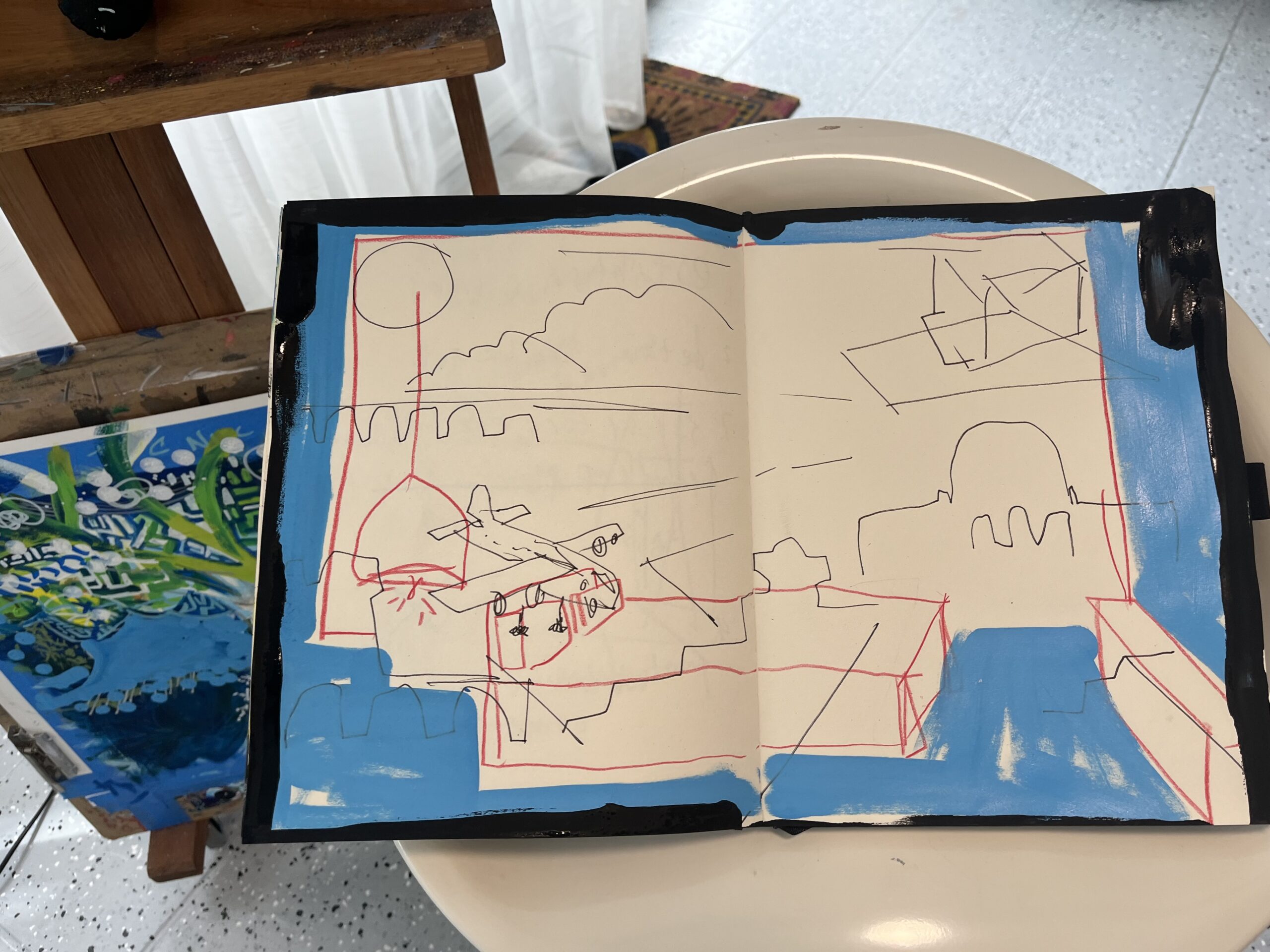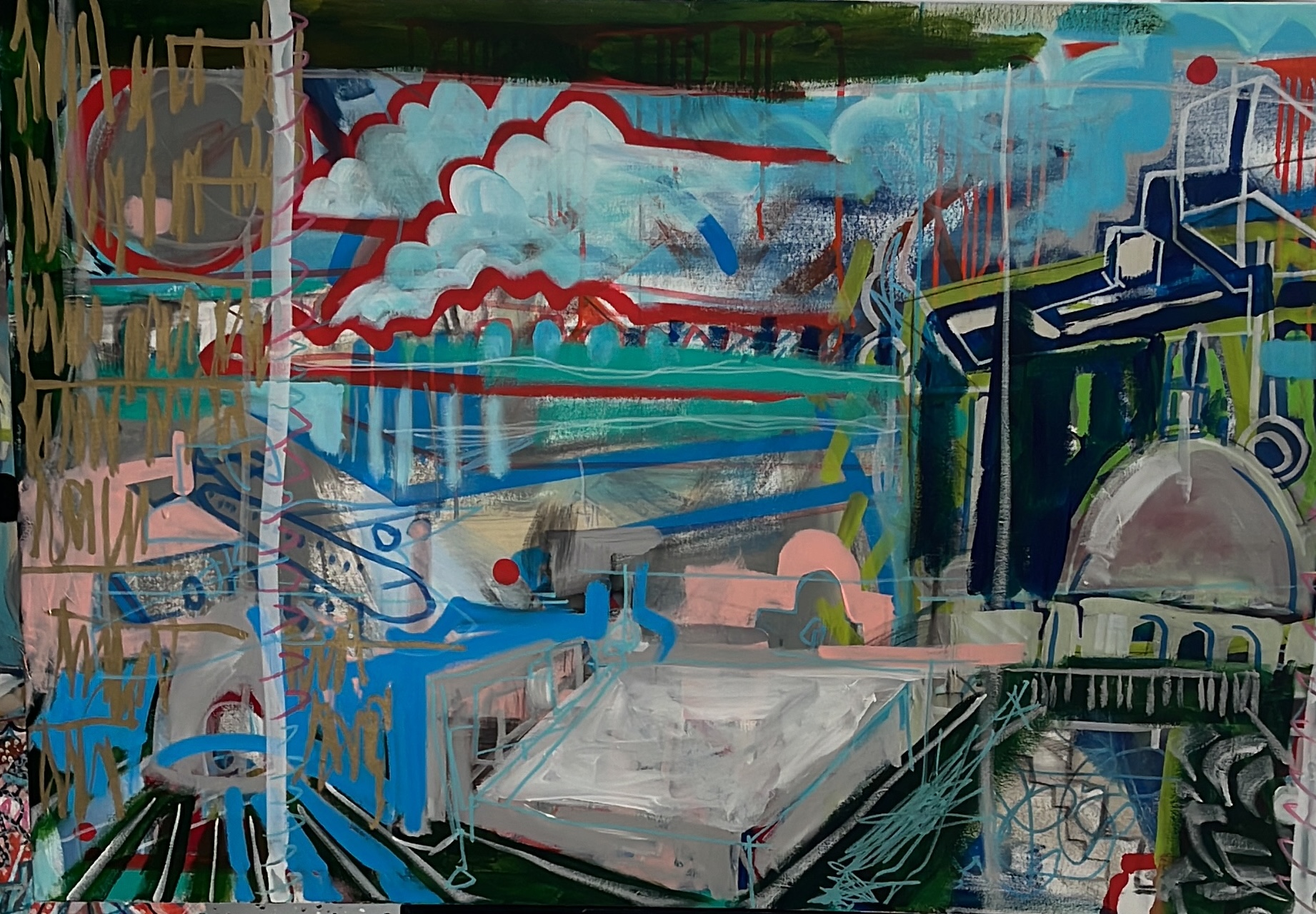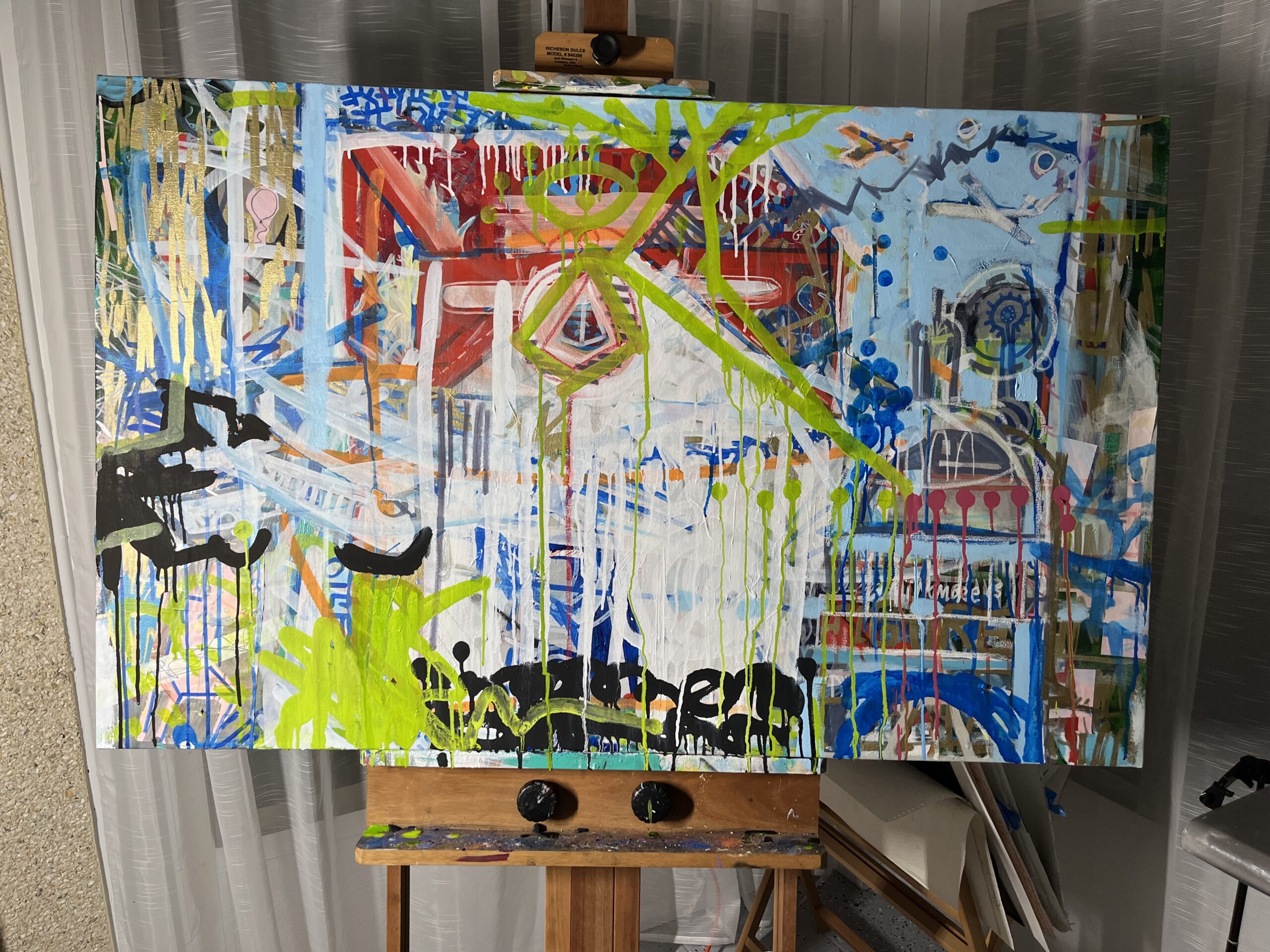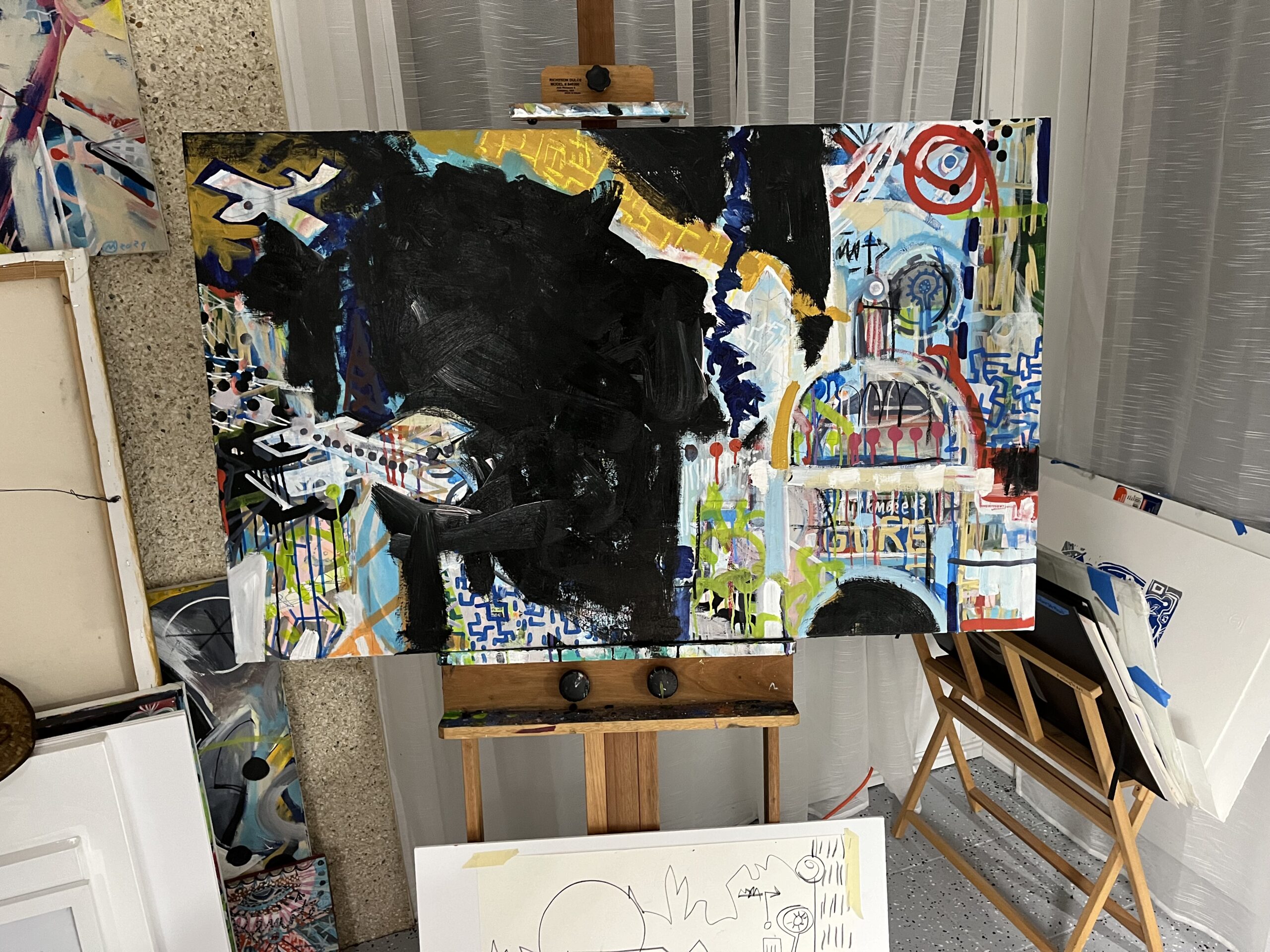Mark T Smith’s work is a kaleidoscopic blend of precision and spontaneity, a fusion that mirrors the very process he uses to create his art. Each painting is the result of a carefully cultivated balance between two creative approaches—what Smith describes as moving “from the known to the unknown” or “from the unknown to the known.”
This duality lies at the heart of his artistic philosophy, shaping not just the finished pieces but also the experiences and breakthroughs along the way. For Smith, the act of creating art is as much about discovery as it is about intention, and his process reflects the dynamic interplay between structure and intuition.
Pathway One: From Known to Unknown
Smith’s first creative pathway begins with clarity. Whether it’s a commissioned work with specific parameters or a personal piece with a defined vision, this approach is rooted in premeditated intention. “This happens both in my personal work and in commissioned projects, where a specific outcome is often desired,” Smith explains. The journey from known to unknown starts long before the brush touches the canvas. Smith begins in his sketchbook, developing ideas through multiple iterations. “The first thing I do is a bunch of drawings on inexpensive paper,” he says. These sketches are exploratory, serving as a visual brainstorming session where ideas are tried, tested, and refined. But the process doesn’t end with the initial sketches. Smith often dives deeper, conducting research or reworking promising concepts. “I may go through several stages of development until the idea is refined to a level where it can be presented and understood by a lay person,’” he adds with a wry smile.
Process Video: https://youtu.be/TiQQEqGO1lQ
For commissioned works, this stage is crucial. Sketches are presented to clients for approval, ensuring alignment on the vision before Smith transitions to the canvas. Yet this method is not exclusive to commissioned projects; Smith often uses it in his personal work as well. “The main takeaway from this pathway is that I use the sketches to define the painting,” he explains. “It allows me to spend less time working through ideas in color and ensures I can meet deadlines without sacrificing quality.”
Pathway Two: From Unknown to Known
In stark contrast, Smith’s second pathway begins with ambiguity. Here, the canvas is blank, and the direction is unclear. “In this case, I’m going from the unknown into the known,” he says. “It’s about starting fully in the unknown and following what the painting tells me to paint next.” This approach is rooted in surrender—letting go of conscious control and allowing intuition to take the lead. “I let my subconscious mind roam free and index that to my hand to create whatever comes out,” Smith explains. The results are often surprising, even to him. “This method frequently leads to outcomes I could never have predicted,” he shares. “It often results in breakthroughs—whether in technique, material use, or conceptual exploration.” Smith finds this pathway particularly useful when he feels creatively stuck or wants to push his boundaries. “These are the paintings that often become the genuine breakthroughs in my career,” he notes. “They represent an opportunity to explore new ways of expressing myself.”
The Interplay Between Pathways
While these two pathways might seem like opposing forces, Smith sees them as complementary. “Neither pathway is mutually exclusive,” he says. “I often toggle back and forth between them, especially when I’m stuck or want to refine a specific area of a painting or sharpen a communication.” This toggling allows Smith to engage both his conscious and subconscious mind, creating a dynamic process that balances deliberate intention with unbridled exploration. “It’s a way to keep the work fresh and to challenge myself,” he adds. For Smith, the ability to move between these pathways is a key aspect of his artistic identity. “It allows me to approach each piece with a sense of curiosity and adaptability,” he explains. “And that’s where the magic happens—when structure and spontaneity meet.”
The Mechanics of a Creative Life
Beyond his conceptual frameworks, Smith’s daily practice is a testament to the discipline required to sustain a creative life. He spends anywhere from 4 to 8 hours in the studio each day, and sometimes as many as 12 when deadlines approach. This time isn’t limited to painting. Smith also dedicates significant energy to drawing, researching, and thinking—activities he views as integral to his process. “Maintaining a steady and robust practice is the only way to remain in the zone,” he asserts. For Smith, the studio is more than a workspace; it’s a laboratory for growth. “My studio practice is a way for me to evaluate my personal and artistic development,” he explains. “Each piece becomes an artifact that I can measure against others, charting my evolution as an artist.”
A Masterpiece in Progress
One of Smith’s recent works offers a window into the depth of his process. The piece, a 30 x 48-inch canvas stretched on 2-inch bars, was initiated on June 10, 2024, and “completed” on November 11, 2024. The work incorporates nearly every material in Smith’s artistic arsenal—pastels, charcoal, spray paint, acrylics, paint pens, house paint, metallics, graphite, and even scratching and etching techniques. “I use everything except for oil paint, though I do include oil bars,” he notes. The result is a vivid tapestry of color and texture, a visual narrative that exemplifies the interplay between Smith’s two pathways. “This piece represents both the structure of the known and the spontaneity of the unknown,” he explains.
The Joy of Artistic Discovery
For Smith, the act of creating art is more than a profession; it’s a way of life. “It’s a beautiful and wonderful thing to be able to live as an artist and to explore your inner creativity,” he reflects. This sentiment underscores everything he does, from the meticulous sketches that guide his commissioned works to the freeform experiments that fuel his breakthroughs. For Smith, the journey is as important as the destination, and each painting is a testament to the joy of discovery.
https://youtu.be/TiQQEqGO1lQ?si=uElKWjbf4MEhwCs3
Expanding Horizons
Smith’s dual-pathway approach is not just a creative strategy—it’s a philosophy that informs every aspect of his work. By embracing both intention and intuition, he has created a body of work that is as diverse as it is cohesive. This philosophy extends beyond the canvas. Smith is constantly seeking new ways to expand his horizons, whether through collaborations, exhibitions, or explorations of new materials and techniques. “The key is to keep pushing forward,” he says. “To never stop learning and growing as an artist.” Through his dual pathways, Smith has carved out a space where structure meets serendipity, resulting in art that is both technically masterful and emotionally resonant.
*Explore Mark T Smith’s latest works and learn more about his artistic journey at [www.marktsmith.com](https://www.marktsmith.com).*



















